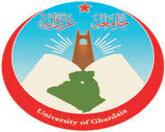Please use this identifier to cite or link to this item:
https://dspace.univ-ghardaia.edu.dz/xmlui/handle/123456789/9135Full metadata record
| DC Field | Value | Language |
|---|---|---|
| dc.contributor.author | BENABBAS, Noujoud | - |
| dc.contributor.author | AMIEUR, Nassima | - |
| dc.date.accessioned | 2025-01-28T10:14:41Z | - |
| dc.date.available | 2025-01-28T10:14:41Z | - |
| dc.date.issued | 2024 | - |
| dc.identifier.uri | https://dspace.univ-ghardaia.edu.dz/xmlui/handle/123456789/9135 | - |
| dc.description.abstract | This work focuses primarily on studying the ecological factors limiting the presence of locusts in southern Algeria and mapping to monitor the dynamics of the locust population during the year 2023. This study was conducted based on data from the National Institute of Plant Protection (INPV) surveyors and modern tools available at the INPV, such as the Global Positioning System (GPS), the Geographic Information System (RAMSES), and satellite information transmission devices (Elocust3). Vegetation, locust, and climatic data are based on observations made by INPV surveyors in Algeria. According to the maps tracking the population dynamics and locust situation for the year 2023, the surveyors deployed 42 ground teams and 7 aerial teams during the summer phase in the vital areas of the extreme south affected by summer rains and within the irrigated agricultural zones in the central Sahara. During the months of February and September, no locust activity was reported. A total area of 798 hectares was treated in June. A total treatment of 1,273 hectares was carried out in May 2023 and November 2023, and an area of 10 hectares in Ain Guezam. In December, an area of 25 hectares was treated in Tamanrasset. Regarding other months, the surveys allowed the determination of the locust locations, consisting of solitary adult insects, dispersed in the agricultural areas of Adrar, Tamanrasset, Bordj Badji El Mokhtar, and Ain Guezzam. It is possible to distinguish the breeding areas in the Algerian Sahara, the most important of which are located in the regions of Tamanrasset and Adrar, notably the pivot zones and in Ain Guezzam. The breeding areas are distinguished throughout the Algerian desert and are represented by cultivated plant species, particularly in the Adrar region, and spontaneous valley plants in the Tamanrasset region. The most favorable biotopes for the gregarization of the Desert Locust are located between the central Sahara and the southern Sahara. In these runoff areas, vegetation gradually dries up, often providing favorable conditions for the multiplication of S. gregaria followed by conditions favorable for density increase | EN_en |
| dc.language.iso | fr | EN_en |
| dc.publisher | Faculté Science de la Nature et de la Vie et Sciences de la Terre - Université de Ghardaïa | EN_en |
| dc.subject | Criquet pèlerin, cartographie, distribution, zones de reproductions, Sahara Algérien. | EN_en |
| dc.subject | Desert Locust, mapping, distribution, breeding areas, Algerian Sahara. | EN_en |
| dc.title | Enquête sur les biotopes de grégarisation et de multiplication du Criquet pèlerin dans le sud algérien. | EN_en |
| Appears in Collections: | Mémoires de Master | |
Files in This Item:
| File | Description | Size | Format | |
|---|---|---|---|---|
| master 2024, amieur (1) (5).pdf | 4.76 MB | Adobe PDF | View/Open |
Items in DSpace are protected by copyright, with all rights reserved, unless otherwise indicated.
